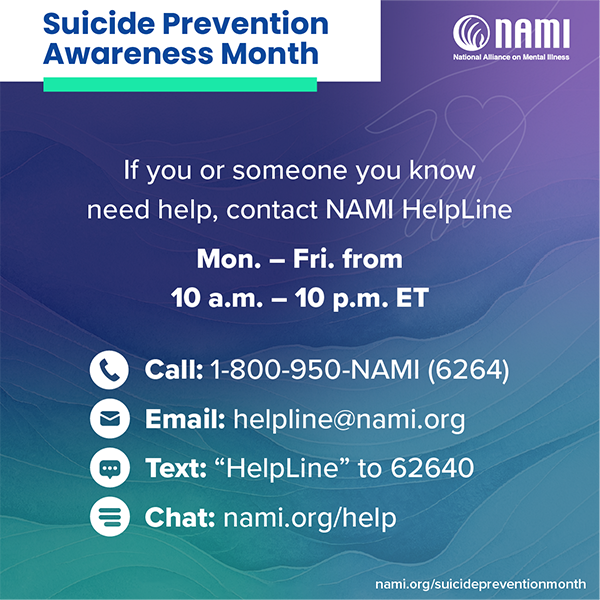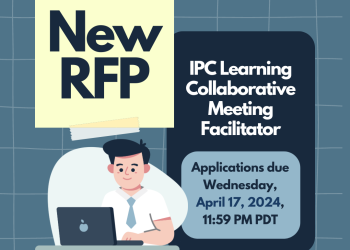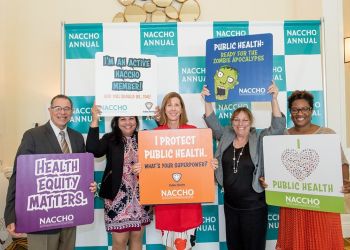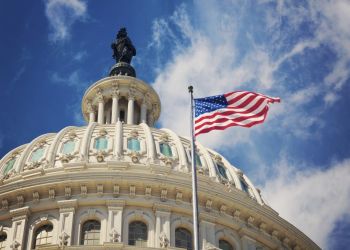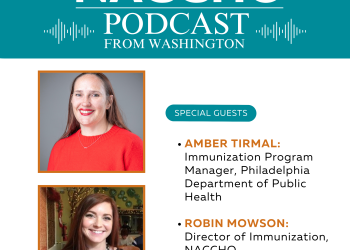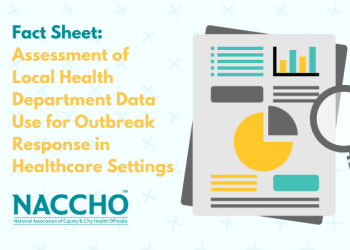The National Association of County and City Health Officials (NACCHO) offers our deepest gratitude to all local health department staff, community and government partners, advocates, and individuals who are working to prevent suicide. National Suicide Prevention Awareness Month offers a critical platform to raise awareness, shift public perception, spread hope, and share information about the topic so anyone can access the resources they need to safely discuss suicide prevention and feel comfortable seeking help.
Over half a million lives were lost to suicide in the United States between 2011 and 2022. Suicide is now among the top nine leading causes of death for individuals aged 10-49. These numbers do not account for non-fatal attempts, those who have experienced suicidal thoughts, those who have seriously considered suicide, or those who have made a plan—which further reflect the severity of suffering of many Americans.
While suicide is a wide-ranging public health problem that impacts every community, certain groups are disproportionately affected: Non-Hispanic American Indian/Alaska Native (AI/AN) peoples, LGBTQIA + individuals, veterans, older adults (ages 75+), and people with disabilities have disproportionately higher rates of suicide, suicide attempts, or suicidal ideation. Black youth ages 10-19 saw the largest increase in suicide rates from 2000-2020 (up 78%), and shockingly, one study found that Black children ages 5-11 are two times as likely to die by suicide than white children. Though provisional data show a slight decrease in numbers of suicide deaths among AI/AN youth (-6.1%) and overall youth ages 10-24 (-8.4%) between 2021 and 2022, we have a long way to go to relieve the most at-risk populations of suicide-related health disparities.
On this National Suicide Prevention Awareness Month, NACCHO praises our local health departments and other public health partners who work diligently each day reduce suicide rates in their communities. NACCHO is proud to share the ways in which local health departments are working to prevent and respond to suicide, including:
Howard County Health Department (Columbia, MD) – The Howard County Health Department’s Bureau of Behavioral Health and the Howard County Local Health Improvement Coalition work collaboratively with multiple partner agencies to address suicide across the lifespan through the Healthy Minds and Suicide Prevention Coalition (HMSPC).
Howard County’s first targeted, multi-phased Youth Suicide Prevention plan, It’s Ok to Ask, was launched in 2019 in response to rising youth suicide rates. The goal was to increase awareness of and reduce stigma around youth suicide. HCHD also engaged high school peer leaders and adult mentors through the evidence-based program Sources of Strength, which creates healthy norms and cultures through peer social networks to prevent suicide and promote mental health.
Given the mental health impact of COVID-19 on residents of all ages, Howard County expanded the It’s OK to Ask marketing campaign in 2022, focusing on suicide prevention across the lifespan and adding a full-time staff position to oversee the program. The HMSPC hosted interactive learning sessions for providers, including the Suicide Prevention Forum, featuring a guest speaker, panel discussion, and a presentation on Veterans Mental Health. A Behavioral Health Navigator also personally assists families and individuals find cost effective and culturally appropriate resources.
Each year, HCHD and its partners engage residents in interactive activities like the American Foundation for Suicide Prevention’s Out of the Darkness Walk and Howard County’s Light the Night 5K. HMSPC actively collaborates with partner agencies to support their suicide prevention-related efforts, including ongoing promotion of 988 hotline, which is the suicide and crisis hotline in the United States. HCHD also provides training in CAMS (Collaborative Assessment and Management of Suicidality), a therapeutic framework for suicide-specific assessment and treatment across the lifespan. This year, HCHD will have community tabling events and various outreach initiatives utilizing social media to commemorate Suicide Prevention Month.
Teller County Public Health and Environment (Divide, CO) – The Teller County Mental Health Alliance (TCMHA) is committed to improving residents’ behavioral health and well-being and Teller County Public Health and Environment’s (TCPHE’s) continued leadership in the county has been a key asset in accomplishing this. Alliance members began to recognize the value of revitalizing storytelling practices and “stitching together” multiple perspectives to create “quilts” of stories rather than simply telling a single story from an organizational perspective.
The Patient Journey Mapping tracks and analyzes the steps that Teller County residents take when accessing mental health treatment. TCMHA contracted with The Steadman Group to craft a “story” of residents’ frustrations in trying to access services, the obstacles they might face, and the points they lose contact with resources in Teller County through the eyes of a resident. The Patient Journey Mapping resulted in a report detailing comprehensive, short- and long-term recommendations to improve local behavioral health systems.
To address these barriers and challenges, reduce suicides by firearm, and promote resilience and emotional health for Teller County residents, TCMHA is working to:
- Strengthen collaboration across service providers to better support resource and capacity issues.
- Conduct collaborative cross-training for law enforcement, first responders, and community faith leaders.
- Utilize the Safe Homes Safer Families project to implement safe gun storage by educating the community about suicide prevention and crisis intervention.
These are just two examples of communities engaged in this important work, but it is a priority for many local health departments. NACCHO is currently collaborating with Education Development Center (EDC) on the Suicide, Overdose, and Adverse Childhood Experiences Prevention Capacity Assessment Tool (SPACECAT) project to build local health departments’ capacity to address the intersection between these three areas of prevention. EDC has worked for many years to support suicide prevention, violence prevention, substance use, trauma prevention efforts, and early childhood development and school-based social-emotional learning programs. EDC’s How We Thrive campaign is a recent example of this work, which aims to support communities around the world in addressing inequitable systems by integrating mental health and well-being into the fabric of the places where people live, work, play, pray, and learn.
EDC launched the Community-Led Suicide Prevention Toolkit in 2022, which offers a one-stop shop where local health departments and coalitions can find seven key elements to inform and advance local prevention efforts. Each element includes information, resources, and tools that can be used to advance local suicide prevention efforts and aims to help communities come together and strategically plan to reach common goals.
See below for additional resources to address suicide at the local level:
- NAMI’s Suicide Prevention Awareness Month – A website full of awareness events and resources that features information on getting involved and creating a memorial fundraiser.
- Suicide Data and Statistics - CDC’s latest provisional estimates for suicide deaths in the United States in 2022.
- Suicide Prevention Resource for Action - A resource from the CDC that offers evidence-based strategies to prevent suicide.
- NACCHO’s Suicide Prevention Resources - A collection of tools and resources that can help local health department officials develop their knowledge and ability to implement evidence-based prevention strategies for suicide (listed under topical capacity).
